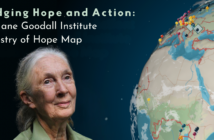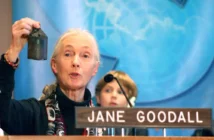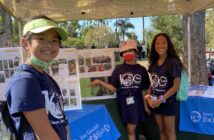by Barbara Sarbin, Something Good in the World
My work takes me into quiet places in nature, with children who have experienced things that no child should have to. Often when I am with a group of refugees from Central America, and I discover that one of the girls is only 11 years old, the same age as my daughter, I cannot imagine what her mother has gone through. I think about saying goodbye to my child, sending her on a long journey to cross a distant border alone, on foot, hundreds or thousands of miles away. In my mind, I can hear the mother saying, that this is the only way her child will have a chance to be safe.
I am standing on the other side of that border, and it is my honor to welcome children to the United States, who will be resettled legally here. They do not speak English, and often they do not even speak Spanish, only a native language of their country, spoken in a remote place. It’s my job to introduce them to one aspect of their new life in the U.S., one they’re familiar with from home: organic agriculture and healthy eating. The foods are different in this New York climate, but the principles are the same; growing vegetables, fruits, herbs, foraging for wild edibles, and tending domestic animals, all in sustainable and ethical ways.
The lack of peace these children feel is something I can help balance, because the gardens I teach in are dedicated to Peace. Designed by and for children, using only native plants, perennials, and the principles of organic gardening and sustainable agriculture, the Children’s Peaceful Garden is dedicated to peace, conflict resolution, and coexistence. With the idea that nature is the best teacher and the outdoors is the best classroom, students are guided in learning by doing, observing the symbiotic relationships that nature demonstrates. With wildlife as their guide, children learn firsthand what it means to live in harmony.
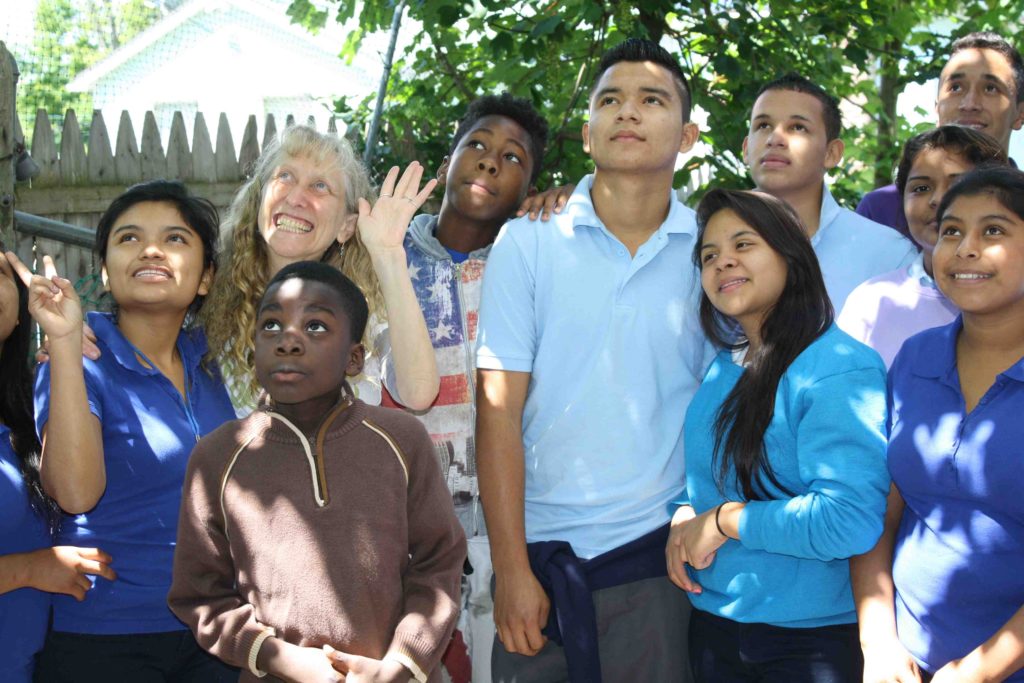
The first Children’s Peaceful Garden came about in answer to a request from a group of children for a space to play in where there would be no competition, no arguments, where they could build and explore, use their imaginations, make art, write, think, and simply be themselves. Over time, it evolved to include a demonstration of sustainable principles, alternative energy systems, renewable resources, and environmental conservation. But its main purpose is to offer a place of liberation in learning and playful discovery.
I watch the refugee children breathe deeply in the gardens, dig in the dirt to find worms for the compost, taste honey straight from the beehive, and I watch them melt, like crayons in the sun. It’s my privilege to witness the melting, the softening of the past, as they let go. They tell me they feel free again, that it smells like home. They’re so happy to gather eggs from the free-ranging chickens, like they’ve always done. They laugh, they chatter, their eyes sparkle. It’s enough.
When I see Jane Goodall with the chimps, in the orphanages or in the forests or in laboratories, I see how they reach out to her for that same kind of peace. She holds a place in herself where animals can be themselves, and feel safe. When I see a video of her helping to release a chimp into the wild, and it turns around to hug her, it’s that same impulse I see in human children. In my own farm-based education work, I see there’s no greater sense of humanity and empathy felt by a child than caring for an animal.
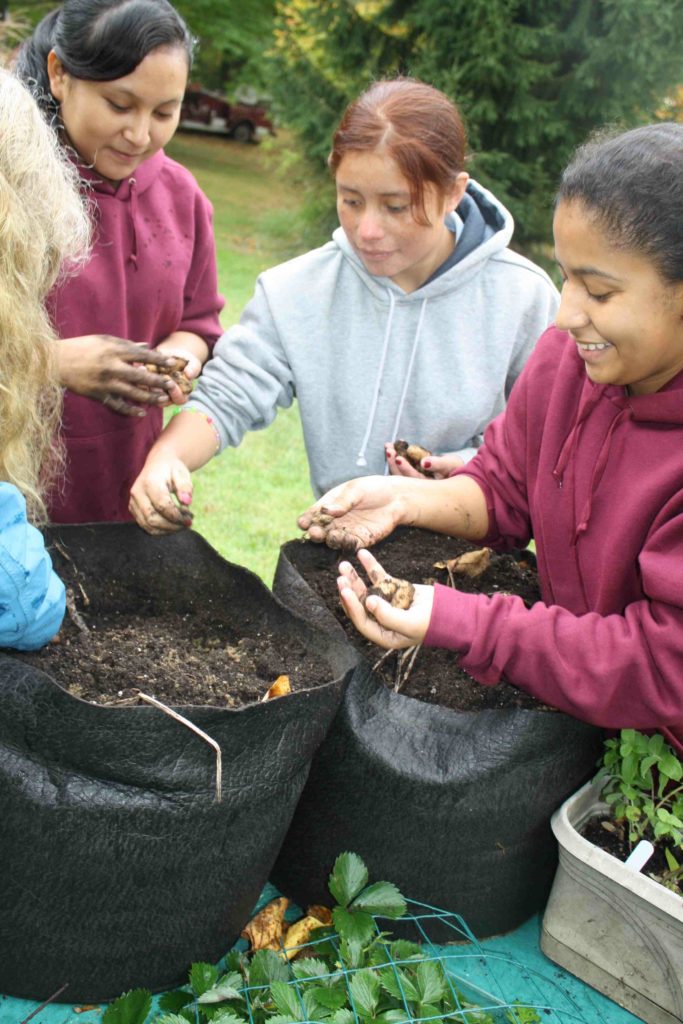 Often when I describe my work, other parents and teachers will cry that all children need this connection with nature. I completely agree, so I try to work with as many collaborative schools and youth groups as I possibly can. The freedom of walking in the woods or splashing in a cooling stream on a hot day, are all experiences that every child is owed. It’s more than just science or life skills or cooking or farming – it’s life going on, as it always has.
Often when I describe my work, other parents and teachers will cry that all children need this connection with nature. I completely agree, so I try to work with as many collaborative schools and youth groups as I possibly can. The freedom of walking in the woods or splashing in a cooling stream on a hot day, are all experiences that every child is owed. It’s more than just science or life skills or cooking or farming – it’s life going on, as it always has.
This environment draws no differences between children in New York, Hawaii or El Salvador, whether from an inner city, a farm or a tropical island, they all come seeking a sense of freedom and safety. A Children’s Peaceful Garden offers containment, where children can use their endless energies in small, intimate spaces, encountering nature at their own speed, and growing themselves as they grow their plants, seeing the connection between the two, learning how a sense of peace pervades natural life, especially in uncertain times.
Tips for Educators:
Cultivating peace and harmony in outdoor classrooms goes beyond creating community gardens…
- To incorporate nature and demonstrate coexistence, one element that an educator can add to school veggie gardens are areas that grow native perennial wildflowers to attract beneficial pollinators, such as butterflies, bees, and hummingbirds. Pollinator gardens can edge an open space, flowing in curving shapes, rather than growing inside of a sharply defined raised bed, and can offer a proliferation of color and types of flowers that make the area look and feel more open and natural.
- Seek nature-based garden shapes, rather than squares and rectangles – the Earth doesn’t grow plants and flowers in perfectly straight lines. Keyhole beds, spiraling, mandala, or leaf-shaped gardens – all of these can offer pathways for children to walk through the plants and flowers, and make access for harvesting and weeding much easier.
- Build a semi-circular sitting area outdoors using old logs created from trees that have been cut down for safety reasons or have fallen in a storm. This demonstrates repurposing and gives children the idea that not only can we reuse old trees, but we can also up-cycle by creating an outdoor classroom for class meetings, resolving conflicts, or making agreements. Best is if the benches created for this purpose have a view, so that children can get a sense of a longer outlook – it’s a live analogy for their discussions.
- A “guild” garden demonstrates how plants not only coexist but help one another through a symbiotic relationship, similar to companion planting. One example is a Walnut Tree Guild, where a Walnut Tree is surrounded by specific plants that feed the soil with nutrients that help give the tree what it needs, and yet are unaffected by the “juglone” (a toxin for most plants) that the Walnut Tree emits. Another great example can be demonstrated with free ranging chickens in an apple orchard – the nitrogen from their manure feeds the soil and encourages the production of apples, while the shade from the trees and falling apples are all appreciated by the chickens.
(For more ideas: see Gaia’s Garden; A Guide to Home-Scale Permaculture, by Toby Hemingway)




